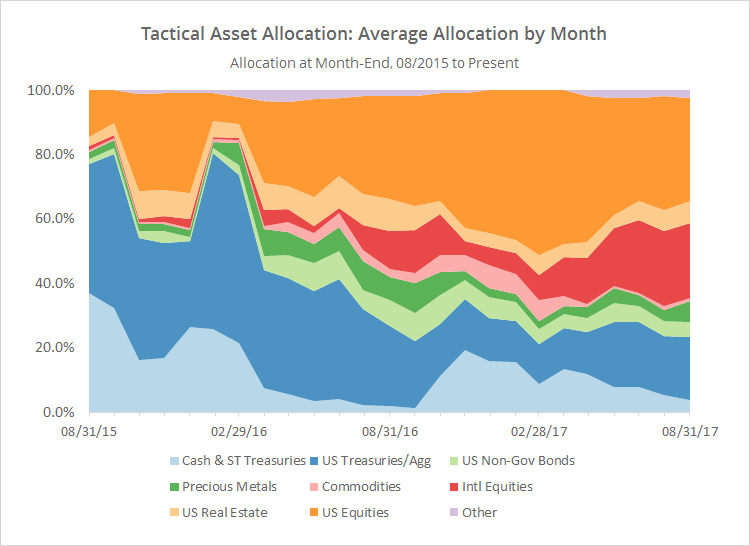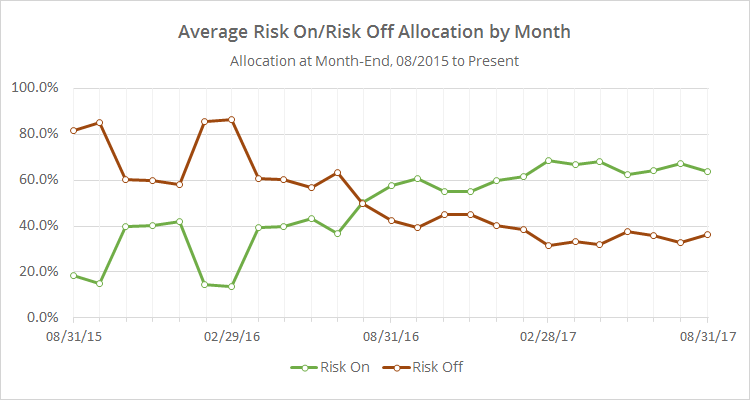This is a summary of the recent performance of a wide range of excellent tactical asset allocation strategies. These strategies are sourced from books, academic papers, and other publications. While we don’t (yet) include every published TAA model, these strategies are broadly representative of the TAA space. Learn more about what we do or let AllocateSmartly help you follow these strategies in near real-time.
Commentary:
 Tactical asset allocation turned in another strong performance in August. The month’s top performing asset classes were an odd bunch, with both traditionally defensive assets like gold (GLD +4.2%) and long US Treasuries (TLT +3.4%), as well as offensive assets like emerging markets (EEM +2.4%) and the Nasdaq 100 (QQQ +2.1%) up big. Notable laggards were anything and everything related to value.
Tactical asset allocation turned in another strong performance in August. The month’s top performing asset classes were an odd bunch, with both traditionally defensive assets like gold (GLD +4.2%) and long US Treasuries (TLT +3.4%), as well as offensive assets like emerging markets (EEM +2.4%) and the Nasdaq 100 (QQQ +2.1%) up big. Notable laggards were anything and everything related to value.
With such a large pool of published strategies to draw on (39 and counting), we’re able to draw some broad conclusions about the state of TAA. The following two charts help to show trends in the asset classes that TAA as a whole is allocating to over time. Members note that you can now see this information updated daily with your new Aggregate Asset Allocation report.
The first chart shows the average month-end allocation to categories of assets by all of the strategies that we track (click for a longer view). For example, “US Equities” may include everything from the S&P 500 to individual stock market sectors.
Important takeaways from this chart: TAA’s exposure to defensive assets like cash (light blue) and US Treasuries (dark blue) remains low. Exposure to commodities (pink) is virtually non-existent, but that’s often happened in the past due to commodities’ tendency towards long periods of flat returns. Exposure to international equities (red) is particularly high at 23%, a level not seen since the end of 2012.
In the second chart below, we’ve combined average TAA allocation into even broader categories: “risk on” (equities, real estate and high yield bonds) versus “risk off” (everything else). I realize that some asset classes don’t fit neatly into these buckets, but it makes for a useful high level view.
This chart shows that overall allocation to risk assets remains high. The last time TAA’s exposure to risk assets stood at these levels was way back in 2007, about 6 months prior to the onset of the Global Financial Crisis (click for a longer view). That’s a good thing if this broad rally continues, but it means that there remains significant exposure to investors here if the market stumbles in September.
We invite you to become a member for about a $1 a day, or take our platform for a test drive with a free limited membership. Put the industry’s best tactical asset allocation strategies to the test, combine them into your own custom portfolio, and then track them in near real-time. Have questions? Learn more about what we do, check out our FAQs or contact us.

